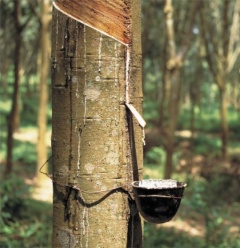Difference between revisions of "Gutta Percha"
| Line 8: | Line 8: | ||
}} | }} | ||
==Description== | ==Description== | ||
| − | + | Gutta-percha is a genus of tropical trees native to Southeast Asia and northern Australasia, from Taiwan south to the Malay Peninsula and east to the Solomon Islands. The same term is used to refer to an inelastic natural latex produced from the sap of these trees, particularly from the species Palaquium gutta. Chemically, gutta-percha is a polyterpene, a polymer of isoprene, or polyisoprene, specifically. Heavy use of gutta-percha during the second half of the nineteenth century, particularly as insulation for underwater telegraph cables, led to unsustainable harvesting and a collapse of the supply.<br><br> | |
| − | <br><br> | + | ==Application== |
| − | + | ||
| + | |||
| + | [[Category:Products]] | ||
[[Category:Other organic material]] | [[Category:Other organic material]] | ||
| − | |||
Revision as of 09:00, 27 June 2013
| Infobox on Gutta Percha | |
|---|---|
| Example of Gutta Percha |  |
| Facts | |
| Origin | See text |
| Stowage factor (in m3/t) | 2,4 m3/t (bags/cases) |
| Humidity / moisture | - |
| Ventilation | - |
| Risk factors | See text |
Gutta Percha
Contents
Description
Gutta-percha is a genus of tropical trees native to Southeast Asia and northern Australasia, from Taiwan south to the Malay Peninsula and east to the Solomon Islands. The same term is used to refer to an inelastic natural latex produced from the sap of these trees, particularly from the species Palaquium gutta. Chemically, gutta-percha is a polyterpene, a polymer of isoprene, or polyisoprene, specifically. Heavy use of gutta-percha during the second half of the nineteenth century, particularly as insulation for underwater telegraph cables, led to unsustainable harvesting and a collapse of the supply.











